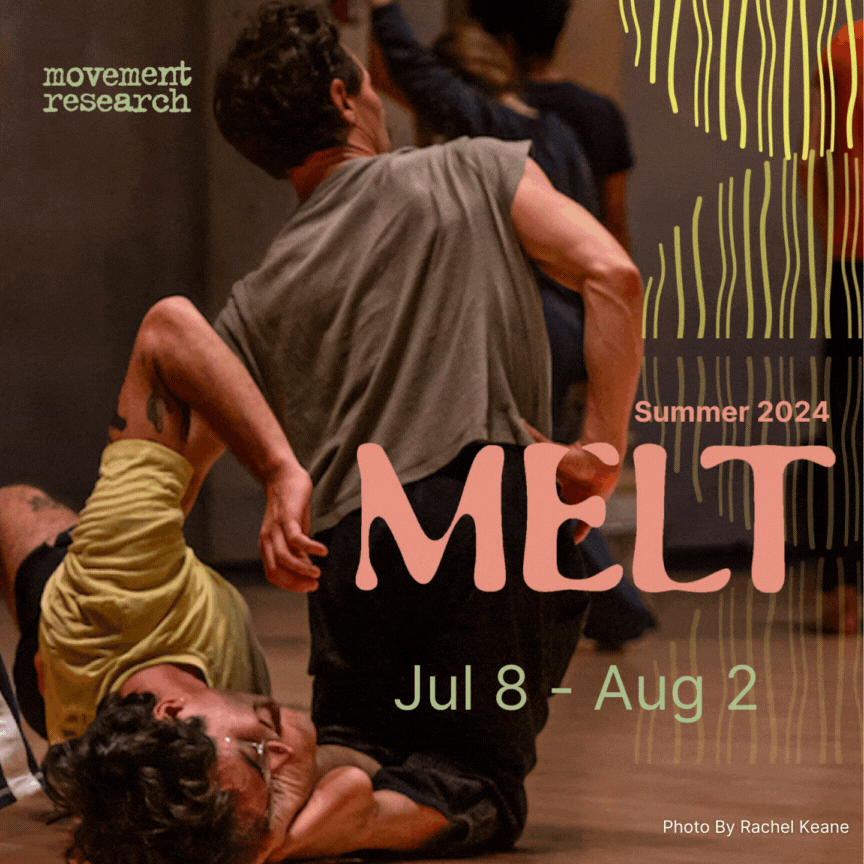Interview date: December 24, 2011 in Brooklyn
Download a PDF of this conversation
Maria Petschnig and Marissa Perel view and discuss the documentation of Petschnig’s live video performance, See-saw, seen-sawn at the Austrian Cultural Forum on November 10 as part of Performa 11. The audience sat facing a theater wall with projection, which alternated between live-feed and recorded video, controlled by Petschnig who was performing in a space above the audience and the stage.
Marissa: In looking at the documentation [of the performance], I remember being aware that some people couldn’t tell that there was a room above the seats. So some audience members thought that they were going to see a live performance but no one ever comes onto the stage. It’s unclear if the projection is a video, or if it’s a live feed of a performance.
Maria: I think hardly anybody knew of the existence of the tent-like space up on top of the staircase.
Marissa: And you didn’t want people to see that you were creating a performance immediately?
Maria: Right.
Marissa: But did you want them to slowly realize it …
Maria: Yes, I did. Because of how the space was laid-out, I knew it had to happen on the staircase. In the past, in other performances, I was usually a little closer to the audience, though I would still be separated by a partition. The ACF theater has the stage in front with the screen above. I feel that if I had been on the stage my being in an enclosure would not have been justified, but being up and over everyone’s heads made sense.

Marissa: So, the video projection starts…In this part there is a man in a kind of a corset with something across his face. Is that preventing him from breathing?
Maria: It’s tape, to change his features, so you can’t see his face properly.
Marissa: He’s shaking out this blanket. It seems like he’s either making up the bed after some experience he had in the bed, or he’s preparing the bed for another experience.
Maria: We don’t know.
Marissa: We don’t know. O.K.
Marissa: In the video there’s a mystery as to what lies beyond the camera. There’s a potential for activity in every site of the house. But then there’s a feeling of absence. For instance, there’s no one in this large room. Everything is hidden behind the door.
Maria: Well, you have to find things.
Marissa: Does this person have underwear on their head?
Maria: It’s part of the costume.
Marissa: What is it?
Maria: It’s a piece that I created and it’s an extension of what he’s wearing on his torso. It’s a part of what is holding the costume onto his body, so it’s holding the piece behind his head. It’s doing two things: it’s making the person anonymous, and binding it onto the body.
Marissa: O.K. Let’s continue to watch.

Maria: Through the video the viewer gets introduced to a world and to its different characters. You see each person in a different space. There’s never any interaction with anybody else, so there’s this underlying loneliness to it. You see each one in some kind of activity, but they don’t meet, they don’t know about each other. One of the ideas that led me to try this experiment, involving other participants, other people, strangers, was to get some distance from the work I had been doing—wearing these things, and having myself filmed—and seeing other people doing what I’ve been doing, figuring it out.
Marissa: Let’s just pause for a moment to talk about the man that we just saw, who is wearing that purple thong that I’ve seen you wear [in past videos], but also he had white socks on. Is that a spillover from his ‘normal’ personality? What I mean is: did you want him to retain something of himself while performing in your work?
Maria: I would say it’s to give the impression that he’s doing it for someone else, that he’s just unaware of how he looks, why he has this on, why he’s wearing it. He’s doing it for himself. He’s fantasizing maybe, about things. He’s not aware of being watched.
Marissa: There’s a sense of loneliness, but then there’s also a sense that being in this garment is autoerotic?
Maria: Yes.
Maria: So, you see this woman dancing, wearing an ipod as she’s doing it, and she’s probably in her own world, thinking of something.
Marissa: Does she feel sexy in her own world?
Maria: I think so.

Marissa: Here’s a question I have about that. Within the world that you’re creating, where the participants can augment their forms with anything from a strap to a cut-up shirt, is it a private sense of eroticism? Or is it inviting someone else [the viewer] to participate in that eroticism, with all of its complicated variations and ambiguities about the body.
Maria: No, it’s the first one, using or making use of a fetish to become somebody else, to step outside your own familiar world for a moment.
Marissa: In the empty rooms, the furniture also looks like it has the potential to be other, like the bodies. The sight of a metal holder for baggage becomes a fetish object.

Maria: In these rooms, there’s an absence, and so one fantasizes about who inhabits the space and what is the use for it. We create our private spaces, and they should serve certain functions, but then how do you observe spaces? In terms of their usefulness or their potential for intimacy? Or if within an apartment there can be a fine line of what could be private and what VERY private.
Marissa: The awkwardness comes from familiarity. We usually expect awkwardness to come from the unknown, when something new comes in and we have to adjust, but this is from something completely known put in a context of display. I could relate to it, and [as you said], allow the figures in the video to become something else. When the projection switched back to the house, I was struck by how fetish is found in these relentlessly mundane, quotidian tasks. The repetition of folding clothes, packing, and ‘tidying-up’ becomes a source of perversion and fantasy. The fact that the man kept his costume on while doing these chores made me sad about the separation between the public and private self. It was as if he didn’t want to return to “normal.”
Maria: If there is such a place for him to return to, but who’s to say?
Marissa: Yeah, and another thing that remained open for me was whether the person taking the video was a voyeur, or if the participants knew the person behind the camera and were fully aware [of being filmed]. Your piece left the audience in the position of the voyeur. On one hand, art viewers are voyeurs. We don’t know the experience or the motivation of the artist, so at best we are looking in on the experience. It’s a paradox of relief and alienation. What is this crazy house? Is it a mansion?

Maria: It’s a Bed and Breakfast. In October I took a trip to Upstate New York, and when I was there I realized that it was going to be the starting point for See-saw, seen-sawn. I knew the participants by then, and I had started to think about which rooms they would perform in, how we would spend time with each other to figure this out and then film.
Marissa: I appreciate how in this shot, you see the reflection of the table and lamp in the mirror, and in your performance work you work a lot with mirrors and domestic space as a way of doubling yourself or providing another perspective on how you appear.
Maria: Yes, as soon as a mirror comes into play it changes your perception and representation. Do you strike a pose? How much do you think about how you want others to see you?
Marissa: So you’re saying that, when you’re looking at a mirror, you’re not just thinking about how you look to yourself, you’re thinking about how you might appear to others, and the way you want them to see you, which is, in a sense, antithetical to how you’re presenting the participants in this video.
Maria: That’s right.
Marissa: But they’re not distressed over being recorded or seen by the camera.
Maria: Right.
Marissa: Oh, I never noticed that before!
Maria: What, that guy?
Marissa: Yes! There’s a guy lying on the ground, completely clothed in a space where you can’t tell whether it’s an actual room or an intermediary space.
Marissa: The projection switched to the performance. It’s like you’re the ringleader of all these men in tights, and you have this very beautiful strap around your body that can’t be mistaken for something mundane. There’s something about it that can only mean fetish. And then you have a shirt or something that covers you in another way. But then the lines that this strap is making around your torso and buttocks reflect the lines that the tights create around the men’s. Even still, it serves to heighten the look of your body as a site of eroticism. But I want to know about that mixture between the awkward and the erotic.

Maria: I wanted to create a group situation with strangers in a claustrophobic space, where nobody is wearing much and to see what the dynamic would be like. Then I am leading, and I am showing and teaching them things.
Marissa: Here’s a question I have about this. My question is about the mirror—if somehow, because this is a closed space where you can’t see yourself but we can see you, you serve as a mirror for the participants, so they might be in this awkward costume but when they see you, they see a reflection of something erotic in themselves, and that’s something you’re trying to bring out.
Maria: I make myself more vulnerable in my costume, but I’m also experiencing empowerment. I’m hoping that the performers will follow, and feel comfortable within the awkwardness. When you look at a person who’s not in perfect shape, or who is wearing something in an awkward way, or is making an awkward gesture, when you’re exposed to that, is there another way of looking at him or her than judging. Can you, if you look long enough, change your gaze for the experience to become something else?
Marissa: There is something about obstructing the face that comes back in many of the images. There’s something about it that feels like a cyborg or animal or alien but it obstructs their breath at the same time.
Maria: The main reason is for us is to become anonymous and for the viewer to be able to fantasize. So that it’s not so much about the person or the personality. Instead you look at other things and start imagining.
Marissa: But then the personality comes through in their activity and what they like or what they fixate on.
Maria: Well, in general it’s more satisfying when one can look at somebody’s face and is able to tell by the expression, “Oh, ok, this person is feeling this way,” or “I know what he/she is thinking.” When you are not allowed to see the face properly it leaves a lot more open. Most likely they are not themselves right now. Maybe because they restrict themselves, and it is emphasized that this is not natural.
Marissa: Right! But then it seems completely natural. Like it seems so natural to put that on and watch television somehow. I don’t know how to explain that either but there is something about the behavior of the participants being natural to them. We wouldn’t see this because normally they would do this in their own privacy. It’s interesting, I find in repeatedly watching the video of the performance part that there’s something futile in all the actions that happen, or something isn’t fulfilled. Could you tell me more about that?
Maria: Well again, throughout the whole performance the absurdity behind it is a theme and frustration kicks in. You think you know but the next moment you aren’t sure again. You cannot really pin down these psychological, in-between moments, in the prerecorded video as well as in the live part and the switching back and forth. Maybe you look at it, and in the first moment all the visuals make it clear, like “Oh, something is about to happen,” something weird and sexual and perverse, but then it turns out that due to the realness or boredom of these people, nothing of this sort is actually taking place.
Marissa: Intimacy can be such a weird game.






